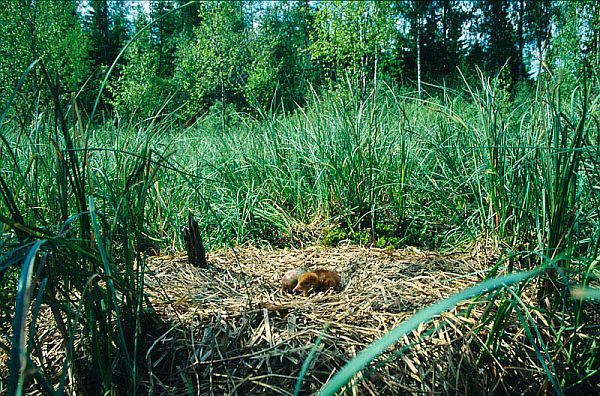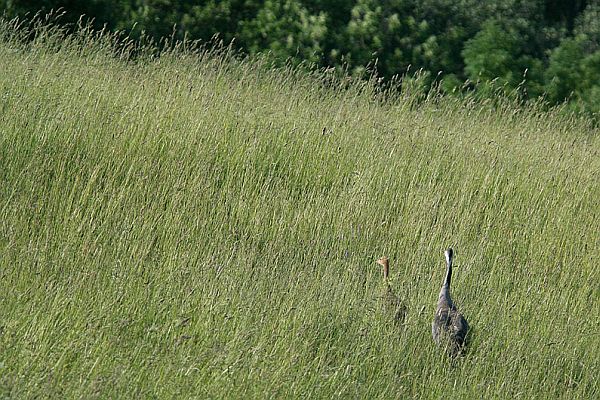Crane Sookurg Grus grus
These graceful birds can be seen andheard already in March. In spring there is no mass migration through Estonia, so we have mostly to do with cranes nesting here. They may be up to 7 500 pairs.
They started building the nest in April, choosing watery sites – the place will protect them from interruptions as well as small predators. Nests may be found at quaking lake verges, river meadows, bogs with shrubs, open bogs … The adults bring in a lot of moss for the nest base, withered grass or reeds, everything that is freely available in the neighbourhood.
In the beginning of May at latest the female generally lays 2 large greenish eggs with a brown pattern at intervals of some days. The incubation lasts 4 weeks.
The chicks hatch at intervals of a few days, quite as the eggs were laid. The last one hatched is allowed a day to dry and feed, then the cranes leave. They move around with the adults and feed quite near the nest for the first few days, but day by day they move further away.
Cranes
Before Midsummer we can already see such a view. Until autumn the adults and young birds keep together.
The young have an almost complete crane plumage already in the later half of August but even then they can be distinguished from the adults..




